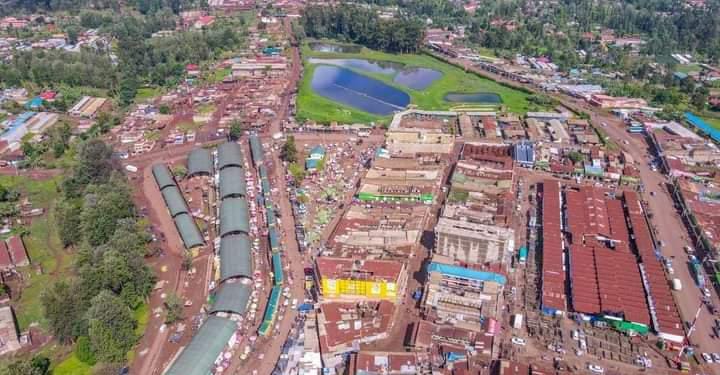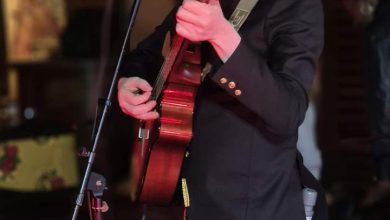Unveiling the mystique behind Meru town’s name: Mutindwa Jwa Kangangi

By Harun Mugambi
In the annals of history, Meru Town emerges as a gem, its roots stretching back to the pivotal year of 1908.
It was during this time that Edward Butler Horne, the intrepid first colonial District Commissioner, arrived in the verdant lands of what would become the heart of Meru County.
Tucked away in Kenya’s former Eastern Province, Meru town is a thriving administrative centre and commercial hub that has undergone significant transformations since its humble beginnings in 1908.
The town stands tall as the administrative hub of Meru County, ranking as the country’s seventh-largest urban area.
Wrapped in the embrace of the northeast slopes of majestic Mount Kenya, this vibrant town is home to over 80,000 as per data from the Kenya National Bureau of Statistics dated 2019.
Geographically, Meru Town is a sight to behold, with its coordinates at 0.047035 degrees north and 37.649803 degrees east.

The soothing Kathita River meanders nearby, dividing administrative facilities to the north and residential areas to the south of its tranquil waters.
As the country’s seventh-largest urban area, and home to Ameru people, a proud Bantu ethnic group, harmoniously coexisting with a mosaic of diverse cultures, religions, and backgrounds, Meru town commonly known as Mutindwa jwa Kangangi boasts as one of the most famous towns in the Country.
But have you ever wondered how this vibrant town got its name? Let’s embark on a journey to uncover the fascinating story of Meru Town’s moniker.
The Arrival of Edward Butler Horne
In 1908, Edward Butler Horne, the first colonial District Commissioner, arrived in the Meru region, marking the beginning of a new era for the area.
Born in 1881, Horne was known for his adventurous spirit and hunting prowess. He spent years in Canada and Wyoming, working as a lumberjack and ranch hand before turning his attention to Africa.
Horne, fondly dubbed “Kangangi” by the locals due to his diminutive stature and perpetual wanderlust, quickly endeared himself to the community.
Unlike his predecessors who preferred settled abodes, Horne alias Kangangi was always on the move, traversing the rugged landscapes from Chuka to Igembe, ensuring justice and progress followed in his wake.
From Mutindwa to Mutindwa jwa Kangangi
Initially, the area was known as Mutindwa, which means “a place where people go to while away.”
This name was derived from the traditional gathering spot for Meru warriors, where they would prepare for potential attacks from neighboring communities.
According to local lore passed down through generations, Meru Town owes its name to a strategic decision made by ‘Kangangi’ (Horne) himself.
The name Mutindwa Jwa Kangangi (Mutindwa of the little wanderer) was coined due to Horne’s constant travels across the district, enforcing laws and promoting education.
“There is another place called Mutindwa Jwa Mbogori in Chogoria, but what sets Mutindwa Jwa Kangangi apart is its association with a white man who governed the area,” Stanley M’Rutere, 85 years old, notes.

Horne’s penchant for wandering reflected his efforts to establish law and order in the region, as recounted by Nathan Mwenda, 72, a former councillor.
“The Meru community affectionately called him ‘Kangangi,’ meaning ‘the little wanderer,’ due to his short stature and constant travels across the district. Unlike the settled ridge-top communities of the Meru people, Kangangi was always on the move, enforcing bans on traditional brews, promoting education, and modernizing the region. The Miriti and Riungu age sets bestowed this nickname upon him.” Mr Mwenda adds.

Horne’s Legacy
Seeking a secure location for administrative purposes, Horne chose a ridge near the Kathita River-elevated, easily defensible, and blessed with fertile lands. This spot, formerly known as Kaithe, was christened Mutindwa Jwa Kangangi in honor of the esteemed commissioner who shaped its destiny.
Horne’s arrival brought significant changes to the area. He built a permanent camp at Mwitari’s homestead, which would eventually become the nucleus of modern Meru Township.
The Construction of the First Stone House
Horne’s office was built using local materials and became the first stone-constructed house in the area. The building now serves as the Meru National Museum, which was established in 1916.
The museum has undergone several renovations and now preserves the town’s rich history and cultural heritage.
A Brief History of Meru Town
Over the decades, Meru Town blossomed into a bustling urban center, its growth spurred by a favourable climate and strategic connections to Nairobi via the B6 road and Isiolo International Airport.
From its humble beginnings as a colonial outpost to its current stature as a pivotal player in Kenya’s economic landscape, Meru Town continues to thrive as a living testament to the enduring spirit of its namesake and the resilience of its people.
Today, Meru Town thrives as a bustling commercial and educational hub in Northern and Eastern Kenya.
Its favourable subtropical highland climate, strategic location, and vibrant economic landscape have made it a beacon for agriculture and tourism.
With its strategic location, the town also serves as a gateway to Samburu and Buffalo Springs National Reserves, Lewa Conservancy, and Meru National Park.
From its exquisite hotels to its array of financial institutions, Meru Town offers a dynamic blend of modernity and tradition.
Educationally, the town nurtures young minds through a network of schools and higher learning institutions, setting the stage for a bright future.
The town is home to numerous schools, technical institutions, and universities, including the Meru University of Science and Technology (MUST) Meru Town Campus, Mount Kenya University, and Kenya Methodist University (KeMU) among others. Non-governmental organizations like Ripples International play a crucial role in advocating for education among vulnerable children.




